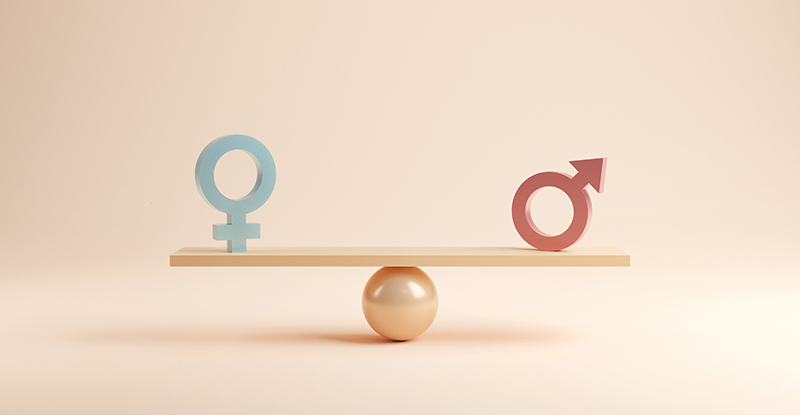
This article focuses on gender balance. I acknowledge that gender diversity is a broad term and no one phrase will capture everyone's experience. For the purpose of this article, when I say "women", I am talking about people who identify as women. I also want to acknowledge that experiences described below may also be familiar to people of other identities. Every day we are provided with opportunities to learn and grow. I welcome your input and suggestions for sustained and future learning.
Gender balance is like sailing a boat. You've got to keep your eye on the direction you are headed and adjust as you go. If you get distracted even for a moment, the boat will steer towards the wind, slowing down your progress. Extend that distraction and the boat will continue to steer through the wind and send you in the other direction. Not quite circles but close enough!
For any initiative to be successful, it requires the focus of multiple stakeholders, meaningful work towards progress, and continued measurement of results. Gender balance is still a work in progress. Data shows that we are headed in the right direction with 31% of global senior management roles being held by women (the highest number ever recorded). In North America in 2021, 48% of entry level positions were held by women and as they made their way through Manager, Senior Manager, Vice President, and Senior VP the percentage decreased, dipping to 24% at the C-Suite level. Overall, this is positive news allowing for continued work in keeping the momentum going.
Silver linings of unexpected experiences:
The pandemic has given us the gift of a global reinvention. It has also highlighted the need for diverse leadership and the realization that how we work has shifted significantly. There is little argument to the notion that thinking differently and allowing the unexpected to become an opportunity for greater reflection leads to healthy discussions and better decisions.
Now is the time to examine behaviours and get used to the concept of doing things differently. Rather than retreating to the mindset and behaviours of the past, this is an opportunity to use a new mental muscle by considering new assumptions and behaviours as a function of moving forward.
Gender balance cannot be achieved solely by 'fixing the women'. Getting to gender balance will take an integrated approach with everyone working together, systems and process review, and a dedication from leaders to make serious change.
Individuals: Reflect and adjust
With the pace of society, business, and the world in general, it's not uncommon to hear people wish for more time and space for reflection and consideration. The pandemic allowed us to take a breath. Now that we are back, here are a few suggestions to incorporate during your thinking time around how we work together to reach gender balance.
Acknowledge you have a bias
Living through change requires us to change with the world. Our past experiences shape who we are, resulting in our own unique unconscious bias. Having an awareness of your bias allows you to dig deeper and explore how strong it may be. The Harvard Implicit Bias Test has been around since 1998 and is commonly applied to assess implicit stereotypes around topics such as sexuality, race, gender, disabilities, skin-tone, and more. Take the test to assess how strongly your implicit stereotypes are and how it may affect your behaviour and decision making.
Examine your behaviour
When in an uncomfortable situation or when you are called on to lead in an environment that 'doesn't look like you', be courageous and examine your own behaviour. Even better, ask someone to help you examine your behaviour and discuss. For example, if a female employee recently had a baby, would you ask them questions related to the preference of their work schedule (ie. part-time, remote working arrangements, travel considerations, etc)? Now ask yourself, would you ask the same question of a male employee who also just had a child? Examining your own behaviour takes reflection and questioning.
Stop the cycle of female imposter syndrome
Studies show that there is little difference between leadership performance behaviours for men and women. However, research found that female leaders scored significantly lower than their male counterparts in the behavioural traits of “Self-Confidence” and “Self-Respect”. In addition, women scored significantly higher than their male counterparts in the traits “Fear of Failure” and “Fear of Success”.
The question is, who is defining 'confidence'? What does that look like? "Fixing" imposter syndrome typically focuses on fixing the individual vs. the cultural environment that includes systemic bias (see the organizations section below). Individually, one prong of the approach to combat these beliefs is for women and men to support people to shift their language from negative to positive - notice it and hold each other up. More importantly, leaders can support a culture that acknowledges and changes the systemic beliefs and biases about what success looks like.
Organizations: Process may be part of the problem
Gender balance is an issue that is no different than any other business issue. In order to tackle a challenge, it's common to gather as many voices as needed from various departments to assess, analyze, and strategize to determine the best course of action. Just as individuals are one part of the solution to achieving gender equality, organizations and the systems within them have a role to play as well. Here are a few suggestions to improve your processes and systems with respect to identifying bias and improving gender equality.
Assess your numbers and define balance
What is the current state of gender balance in your organization by role, level, and by department? What is a reasonable balance definition in your organization by department and as an organization as a whole? Before trying to achieve gender equality, first recognize what is the definition that is best for your organization. If your organization is 60-40 male-female, but 80% of the leadership roles in line positions are held by males and 80% of the leadership roles in staff and administration are held by females, then is that considered a successful model?
Fix the language around hiring systems and performance evaluation
A Hewlett Packard internal report found that men apply for a job or promotion when they meet 60% of the qualifications and women apply when they meet 100%. Although a portion of this finding points to Confidence Gap and Imposter Syndrome, there is another culprit for lack of female applicants - the language used in job postings and performance criteria.
As a result of bias and stereotypes that have embedded themselves into our lives, the language we use is often linked to what we expect women or men to be like. To help make language gender neutral, use a site like Gender Decoder to cut, copy, and paste job descriptions to see if the ad is biased one way or the other. Also, avoid the temptation of putting in too much text into the job description. The more that is 'required', the less women will apply because of a perceived lack of qualifications.
Advocacy program for the win
Tying the concept of unconscious bias to behaviour in the workplace, it is found that women are often over mentored and under sponsored. Relationships tend to form more naturally with leaders (many of whom are men) with other men in the organization. Two reasons are: affinity bias (being biased towards people who are like you) and the belief that leaders cannot help with a journey of someone they do not understand.
The biggest difference between a mentor and a sponsor is that a sponsor will advocate for their protégé with other leaders. A suggestion is to develop a formal advocacy program that ensures both male and female high-potential leaders have access to influential leaders as sponsors.
Individual behaviour is heavily influenced by the environment they are in. Working to improve gender balance requires all parties to work together. Leaders, individuals, and the organization (its systems and processes) will need to be aligned to continue moving this initiative in the right direction.
Monica Murray is a CPA, CA and Certified Executive Coach. She supports organizations to transform managers into leaders. Global demographic data reports, social behavioural psychology TED talks, and Caribbean catamaran sailing videos is what you will typically find on her web browser.



